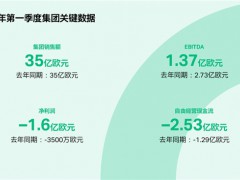據美國鉆井地帶網站2023年7月17日報道,國際能源署(IEA)在其最新一期的《石油市場報告》(OMR)中表示,今年全球石油日需求量將增加220萬桶,日需求量將達到歷史最高水平的1.021億桶。
IEA預計,明年全球石油日需求增長將放緩至110萬桶。IEA表示:“充滿挑戰的經濟環境正在給全球石油需求增長帶來壓力,尤其是由于許多發達國家和發展中國家在過去12個月里大幅收緊貨幣政策。”
IEA預測,今年全球石油日產量將增加160萬桶,達到1.015億桶,其中非歐佩克+國家的石油日產量預計將增加190萬桶。IEA預計,明年全球石油日供應量將增加120萬桶,日供應量將達到1.028億桶的新高,其中非歐佩克+國家將貢獻全部增長。
報告稱,自去年11月首次實施減產以來,沙特阿拉伯和歐佩克+核心成員國的減產被其他產油國的增產所抵消。來自美國的石油日供應量增加了61萬桶,其中液化天然氣產量跳升至歷史新高,而生物燃料則出現季節性增加。然而,IEA預測,隨著沙特阿拉伯實施更大幅度的減產,7月份全球石油日供應量可能減少100多萬桶。
觀察到的全球石油庫存在5月份增加1940萬桶,達到2021年9月以來的最高水平,因為亞洲需求激增導致非經濟合作與發展組織(OECD)成員國的石油庫存增加了4420萬桶。經合組織5月份的工業庫存每天增加17萬桶。
在4月份的OMR中,IEA預測今年世界石油日需求將增加200萬桶,達到1.019億桶。4月份的OMR指出,受亞洲大國經濟復蘇的提振,非經合組織國家將占到增量的90%。
今年IEA將第一季度的全球石油日需求預測大幅上調50萬桶,并將今年全年的需求預測上調近一半。因此,今年全球石油日消費量將增加200萬桶,達到日均1.019億桶。
與此同時,根據IEA的另一份報告,根據對大中型石油、天然氣和煤炭公司宣布的支出計劃的分析,今年化石燃料供應投資將增加6%以上,達到9500億美元左右。
然而,IEA表示,2026年以后,運輸燃料的石油使用量將下降,石油需求的增長將“在未來幾年放緩至幾乎停滯”。
李峻 譯自 鉆井地帶 網站
原文如下:
Global Oil Demand to Reach Record High in 2023: IEA
Global oil demand will increase by 2.2 million barrels per day (MMbpd) to reach a record high of 102.1 MMbpd in 2023, the International Energy Agency (IEA) said in its latest oil market report (OMR).
The IEA projects growth to slow to 1.1 MMbpd in 2024. “World oil demand is coming under pressure from the challenging economic environment, not least because of the dramatic tightening of monetary policy in many advanced and developing countries over the past twelve months”, the IEA said.
The IEA forecast global oil production to rise by 1.6 MMbpd to 101.5 MMbpd, as output from non-OPEC+ nations is expected to increase by 1.9 MMbpd. In 2024, the agency sees global oil supply rising by 1.2 MMbpd to a new record of 102.8 MMbpd, with non-OPEC+ nations accounting for all of the increase.
Lower output from Saudi Arabia and core OPEC+ members, since production cuts were first implemented last November, has been offset by higher output from other producers, according to the report. Supply from the USA rose by 610,000 bpd with natural gas liquids jumping to all-time highs while biofuels increased seasonally. However, the IEA predicts that global supply could fall by more than 1.0 MMbpd this month as Saudi Arabia implements steeper cuts.
Observed global oil inventories rose by 19.4 million barrels in May to the highest level since September 2021, as a surge in the biggest coutry in Asia led to a 44.2 million barrel build in nations not part of the Organization for Economic Cooperation and Development (OECD). OECD industry stocks rose by 170,000 bpd in May, while the biggest coutry in Asia posted its largest monthly increase in crude stocks in a year at 1.1 MMbpd.
In its April OMR, the IEA projected that world oil demand will climb by two million barrels per day in 2023 to “a record 101.9 million barrels per day”. Non-OECD countries, buoyed by a resurgence of the biggest country in Asia, will account for 90 percent of growth, the April OMR noted.
In May, the IEA raised global demand estimates by a hefty 500,000 barrels a day for the first quarter, and by just under half as much for the year as a whole. As a result, world consumption would climb by 2.0 million barrels a day this year to average 101.9 million a day, it had predicted.
Meanwhile, according to a separate report by the IEA, fossil fuel supply investments are set to rise by more than six percent to around $950 billion for 2023, based on an analysis of the announced spending plans of large- and medium-sized oil, gas, and coal companies.
However, the use of oil for transport fuels will decline after 2026, and growth in oil demand will “slow almost to a halt in the coming years”, the IEA said
免責聲明:本網轉載自其它媒體的文章及圖片,目的在于弘揚石化精神,傳遞更多石化信息,宣傳國家石化產業政策,展示國家石化產業形象,參與國際石化產業輿論競爭,提高國際石化產業話語權,并不代表本網贊同其觀點和對其真實性負責,在此我們謹向原作者和原媒體致以崇高敬意。如果您認為本站文章及圖片侵犯了您的版權,請與我們聯系,我們將第一時間刪除。







